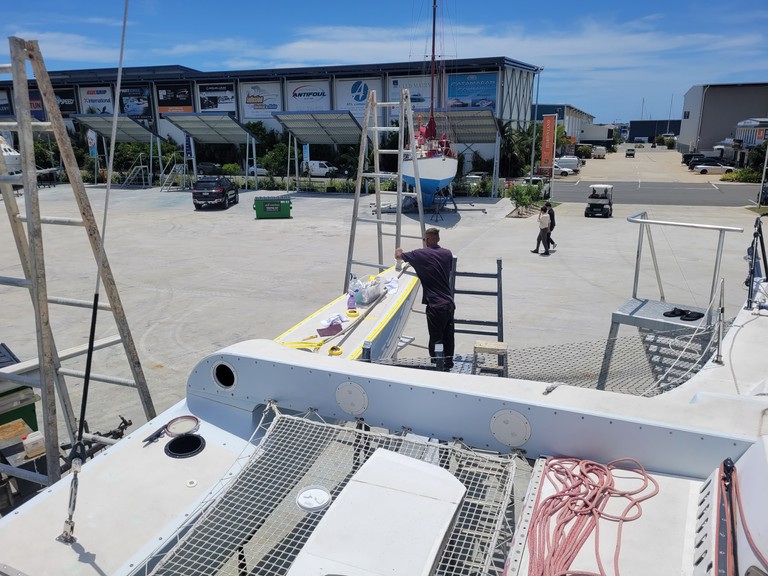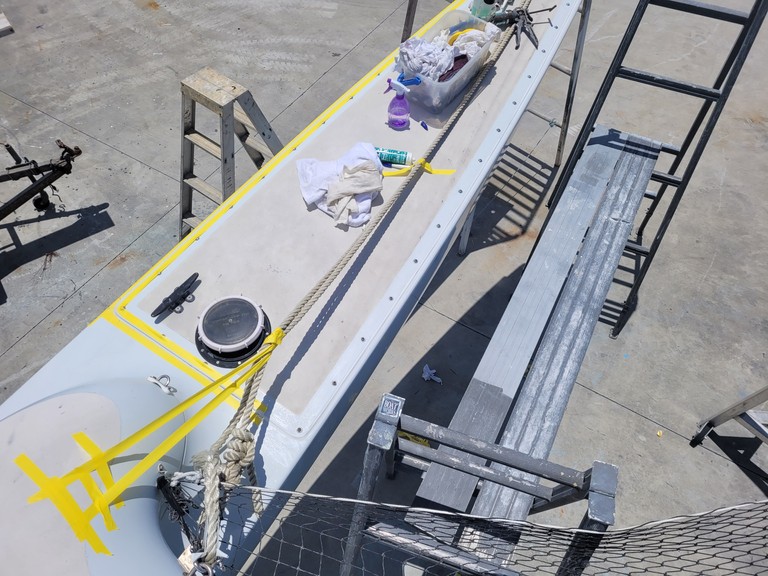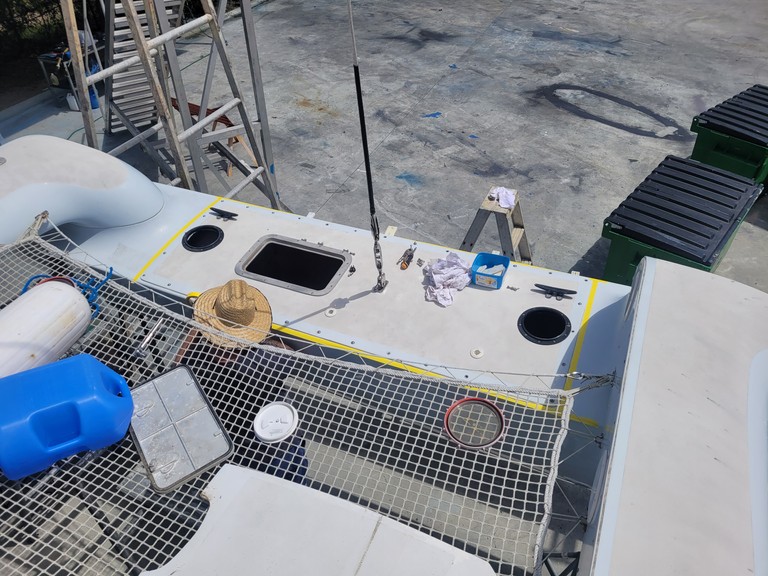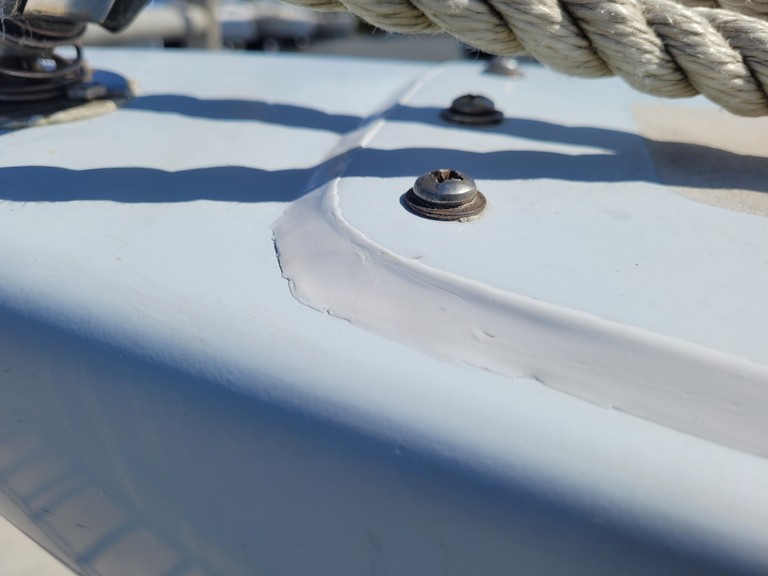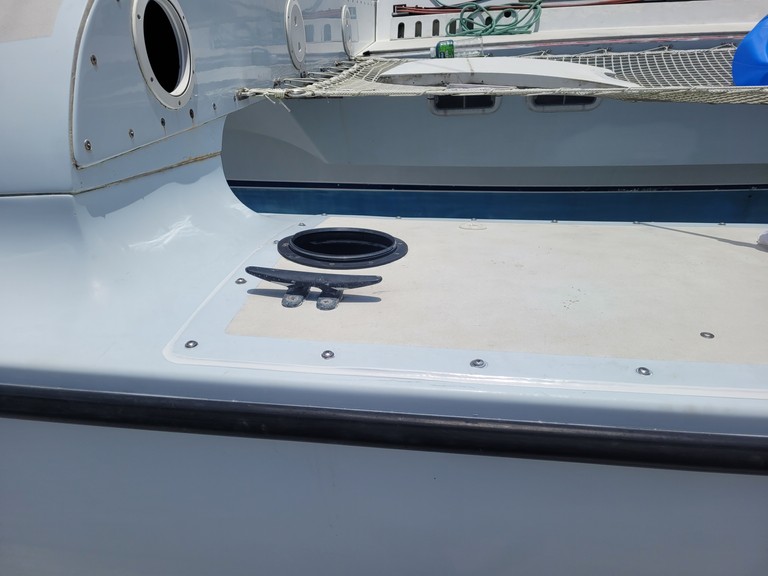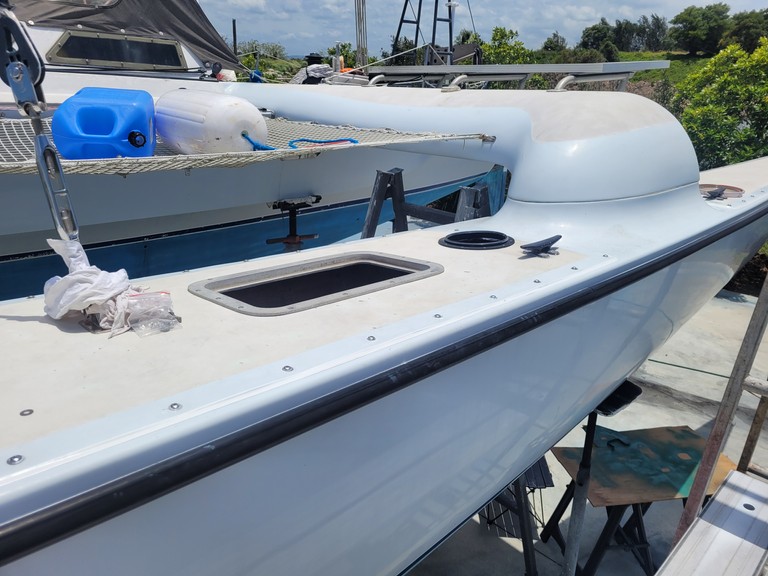Project: Seal It!
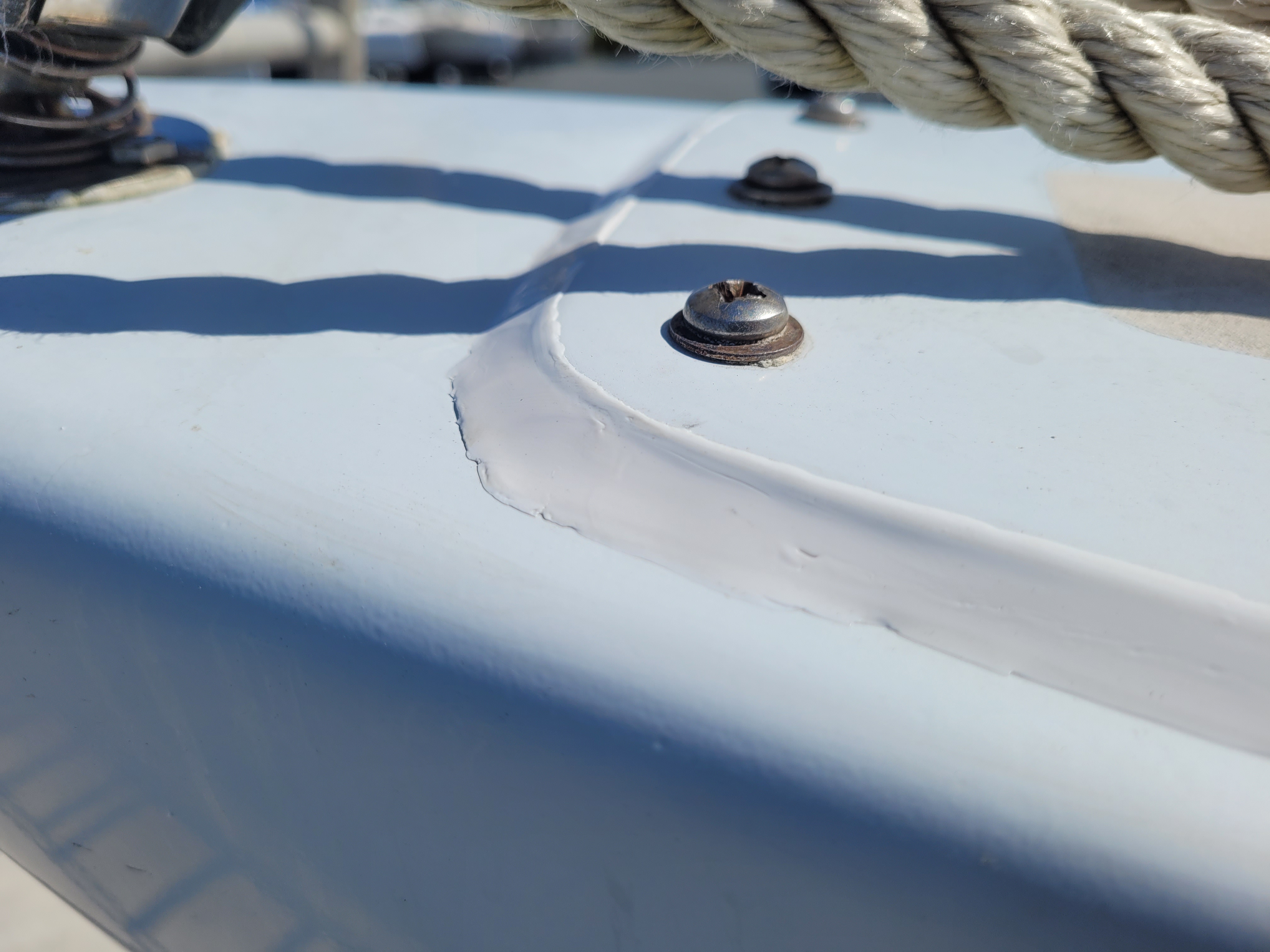
In figuring out my plans and priorities for this refit, there were a few projects that took obvious priority - specifically, repairs that:
- go directly to a core aspect of the boat's seaworthiness (that is: keeps the water out, keeps the rig up, affects the structural integrity of the hull, or keeps the crew aboard), AND
- cannot be done, or would be vastly more difficult or complicated to do, with the boat in the water.
This one was high on the list for both criteria. The two outer hulls (amas, if you prefer the Polynesian terminology) have a very simple, bolted down & sealed, hull-to-deck joint. The good news is that's a nice, quick, easy to repair way to seal them - and can be removed if needed for major maintenance. The bad news is that sealant expires, and a lot of the hull-deck joint looked like this when I got the boat in 2019:

(surveyor's photo, sorry it's not quite in-focus)
Sealant fully expired, bolts lifting out of the deck, big gaps for water (sea- or rain-) to get in. There's 5 compartments in total in each hull - two in the center section, each with a bilge pump, and one aft and two forward compartments with no bilge pumps (since they're supposed to be 100% sealed up).
After sitting for 2 years, there was a lot of water in those compartments. The good news is the fiberglass and balsa core all look, feel, and sound intact. That's extremely good news, since core rot would mean taking the deck off, tearing out all the rotten core, and re-coring the hull where needed.
And I found a secret weapon for getting the water out of those fore and aft compartments in one of the storage lockers: bilge pump on a stick!

It's an old bilge pump, hose-clamped to an aluminum bar, with a DC cigarette-lighter style plug and a long, long cord. Simple, and it worked great! Each compartment has a little access hatch so I could get the pump in, and leaving it open during hot days let the last bit of moisture evaporate out.
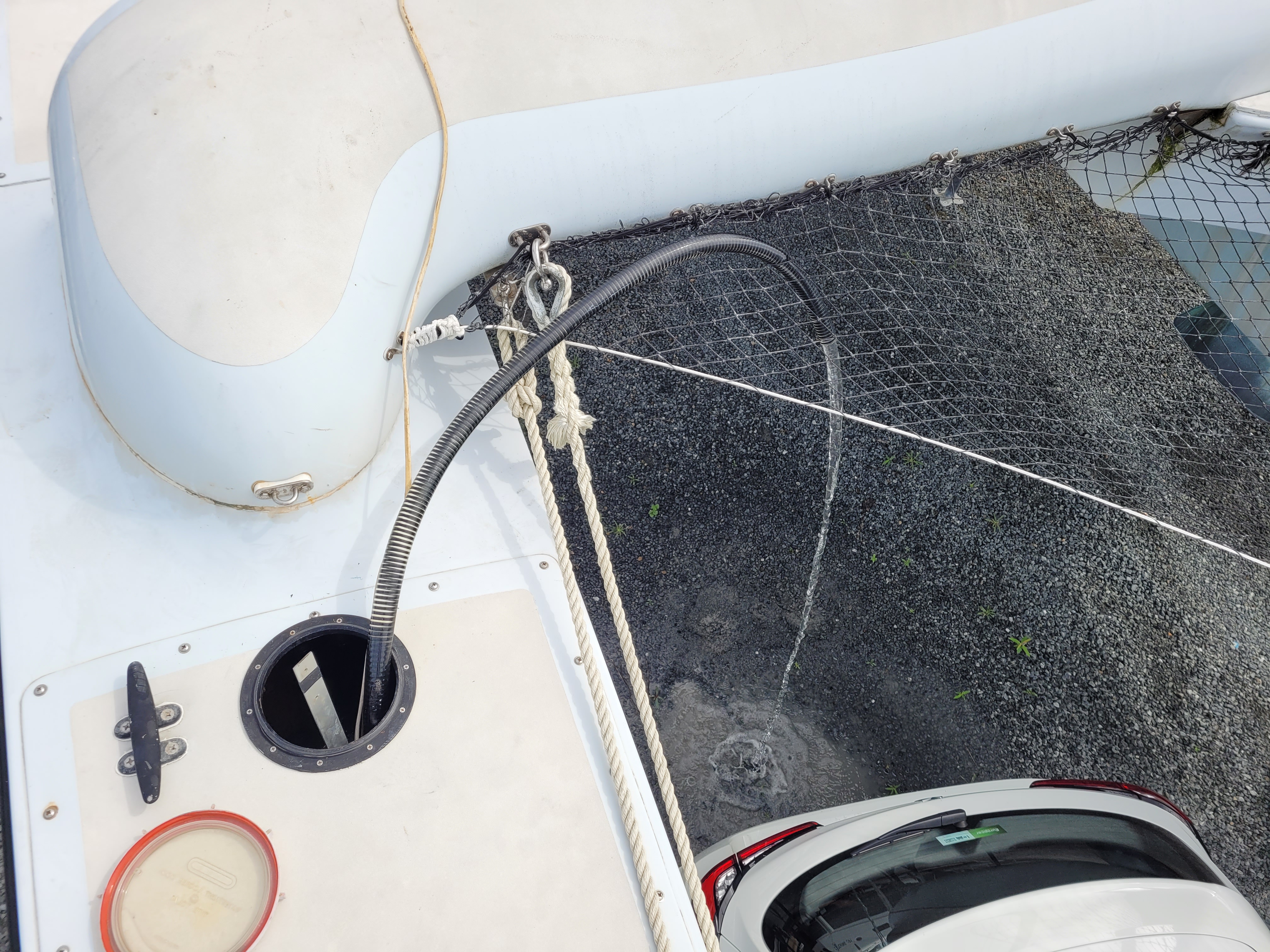
Once they were dried out, the next step was to seal them up to keep the water out. I talked to some pros at the boatyard for this, and talked through a few different options. The best, probably most permanent option would be to take the bolts out, remove all the old sealant, and use either fiberglass or a structural epoxy to permanently seal the hull-deck joint. The downsides are: that's a LOT of work, and it means a LOT more work if ever those deck covers needed to come off to effect a repair.
So we went with a simpler option: a sealant/adhesive called FixTech 190 - it's similar to 5200, but more of an adhesive and cures a bit more like a caulk. I had a bunch of other projects, so had the pros handle this tricky process of re-sealing the hull-deck joints with caulk. We replaced a few of the failed bolts too - the underlying problem is it seems like the last repair on this was done using a steel frame under the bolts to hold aluminum rivet-nuts, which - once the sealant failed and let some water into the mix - was a surefire mix to create galvanic corrosion that ate away the aluminum nuts.
First they taped everything off:
Then I checked for any bolts that were free-spinning or needed replacing, and we got in and replaced those failed rivet-nuts with plain old stainless nuts (with a bit of boat-yoga, thankfully they were all reachable from the small access ports). Didn't get any photos of that, because I was covered in sealant by the end of it.
Then they laid beads of sealant all around the hull-deck joint and we left that to cure:
There were some big rainstorms that came through a few days after the re-sealing, and everything seems to hold up! That's one big project done, and this sealant should hold up for a good long while.
 By
By 